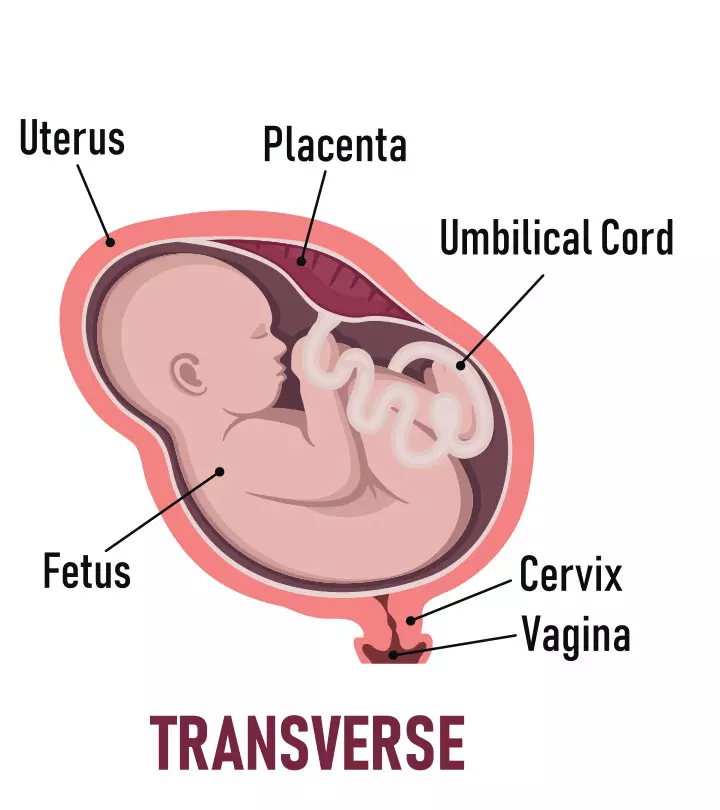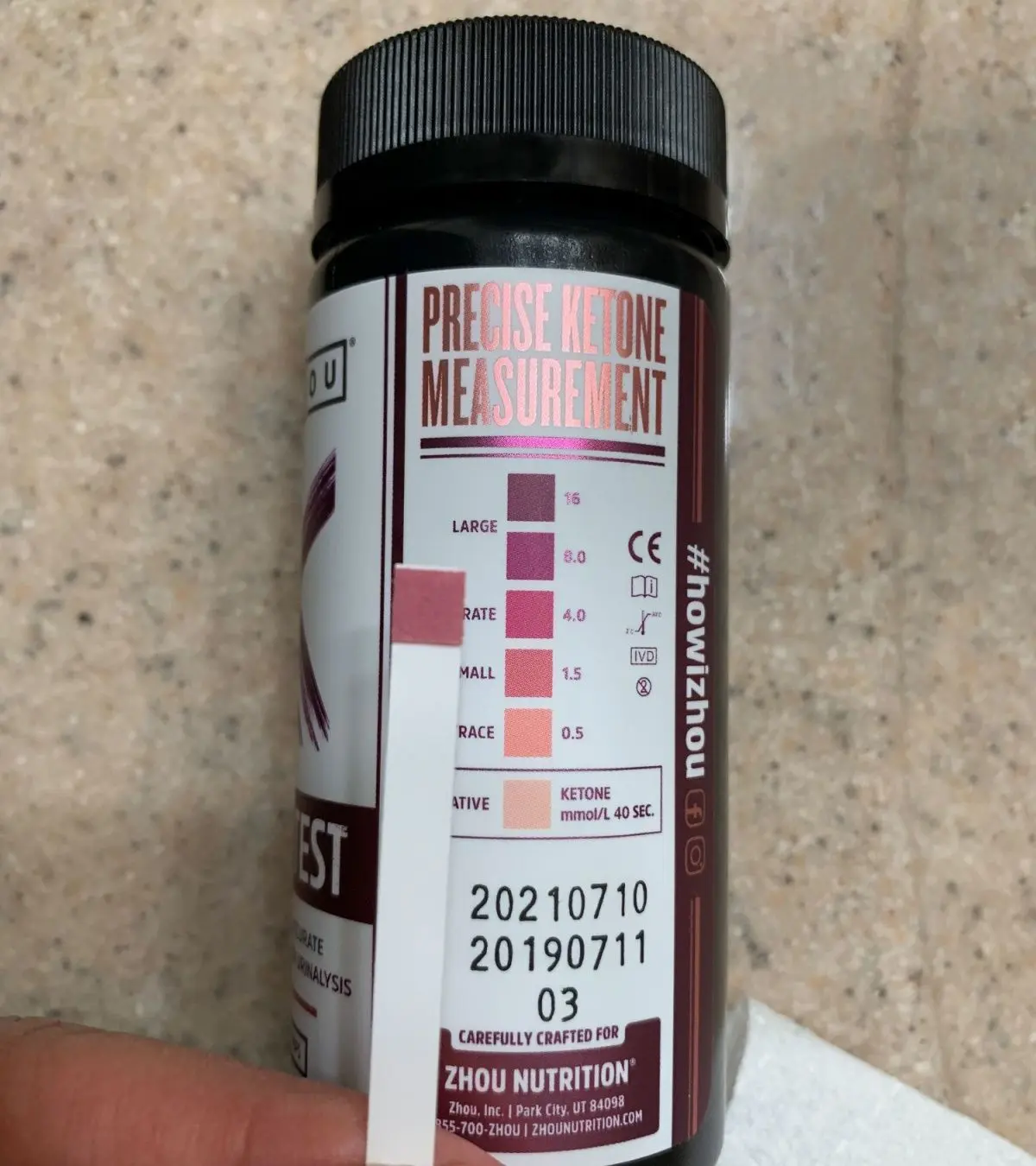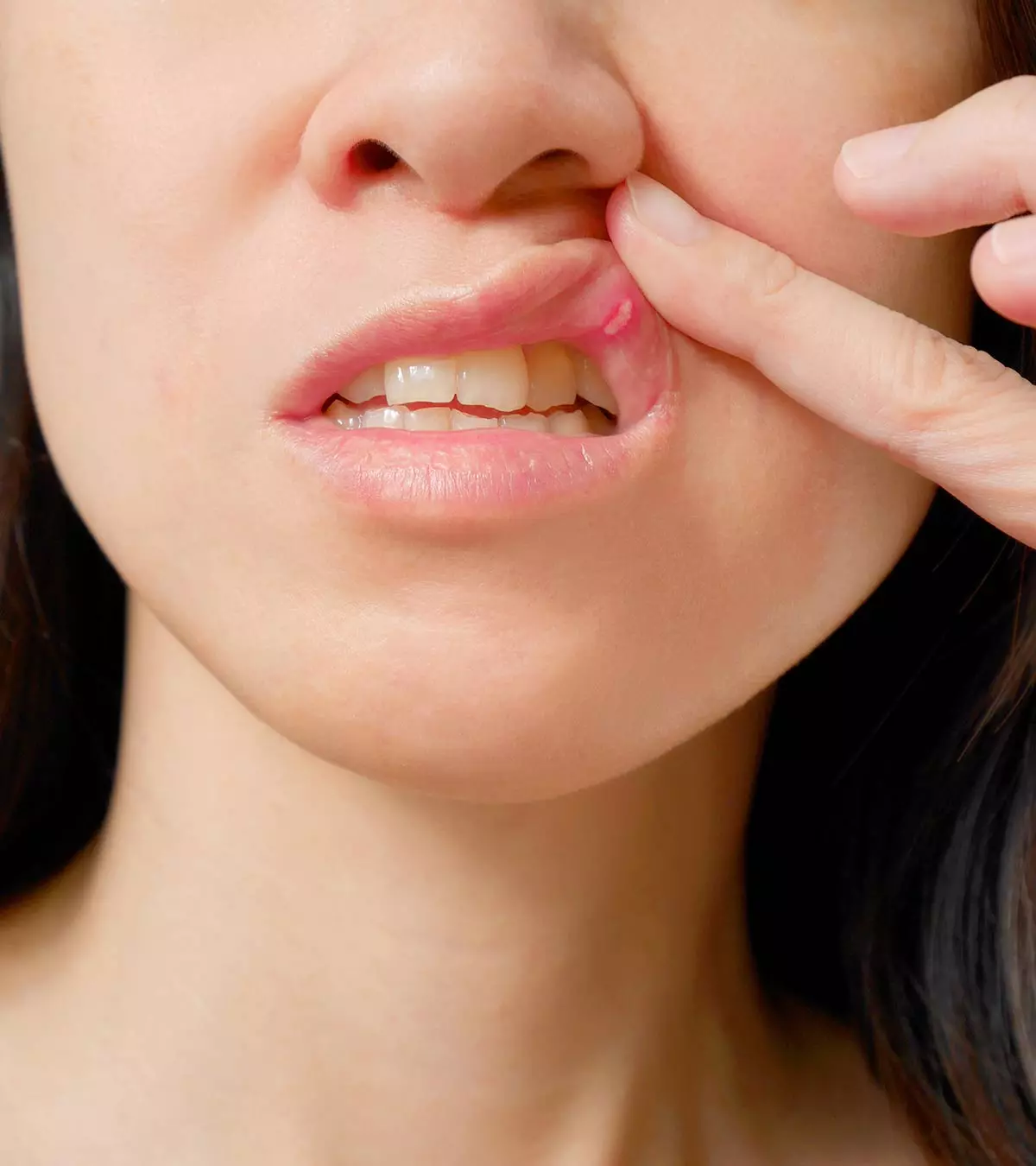
Image: Midjourney/ MomJunction Design Team
One of the several questions new parents ask is “do babies have kneecaps?” or “are babies born with kneecaps?’’ According to Dr. Edward Gotlied, a pediatric specialist in the Stone Mountain area, Georgia, newborns have kneecaps (patella). However, they are made of a soft, rubbery material called cartilage that eventually mineralizes into a bony joint. The cartilaginous kneecaps usually form in the fourth month of fetal life (1). However, they don’t show on X-rays as they are not radio-opaque.

Keep reading to know what cartilaginous kneecaps are, what function they serve, when they turn bony and what issues may occur during this process, and some tips to help strengthen a baby’s kneecaps.
Key Pointers
- Kneecaps in babies initially appear like soft muscles that eventually develop into bony joints.
- The presence of muscles in place of bones makes the birth process easier as the baby’s body parts are flexible.
- Bipartite patella or congenital dislocation of the patella are possible complications in babies.
- Stretching exercises, using knee protectors, and other tips to care for your baby’s kneecaps are given below.
Why Don’t Babies Have Kneecaps?
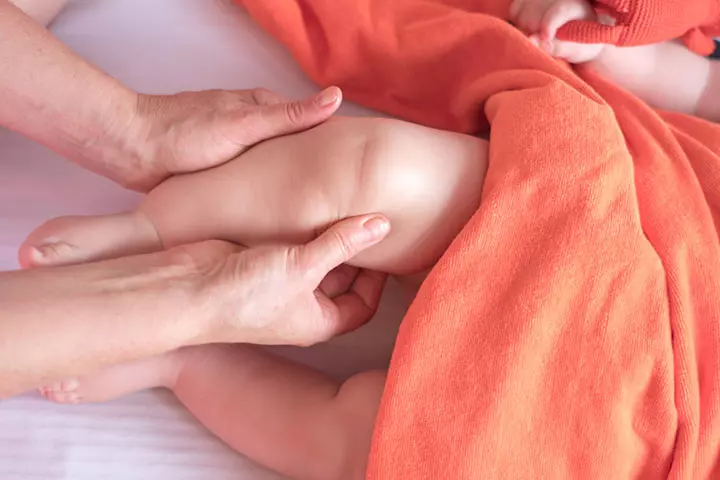
A newborn having more bones than an adult is one of the most fascinating facts about babies. This occurs due to the presence of more flexible cartilage in the newborn’s body. As the baby grows, some of the cartilage hardens and turns to bone, and some bones fuse together (2).
 Did you know?
Did you know?Babies have cartilage in place of bones during birth to benefit both the mother and the baby. Bones are more rigid and harder than cartilage. Cartilage keeps the baby flexible, so it can easily pass through the birth canal. So, if a newborn has bone kneecaps, they might break during birth or injure the birth canal at the time of delivery.
Also, as cartilage is softer and more flexible than bones, it helps the baby be more flexible while exploring and finding their way in the world by crawling or walking.
At What Age Does The Kneecap Turn Into A Bone?
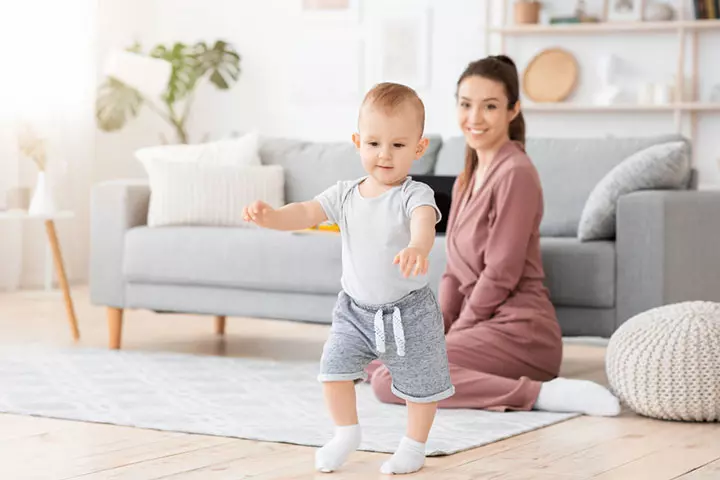
You might also be wondering when babies get kneecaps. According to Dr. Eric W. Edmonds of the Rady Children’s Hospital, the cartilaginous patella starts to ossify (turn into bone) between the ages of two and six years. Various parts of cartilage gradually harden to form a bone, and multiple sections of the bone fuse to form the kneecap (3)
The ossification of cartilage is a slow process and might continue until puberty. The underside of the patella continues to have a layer of cartilage, which works as a cushion for the bones. So in case of any injury or pressure on the knee, it can bear the pressure. It also helps them withstand compression due to weight and prevent friction with the adjacent bones (4) (5).
Sometimes, during the process of kneecap formation, some children might develop problems or experience injuries due to the complexity of the patella’s structure and the amount of load it bears.
Possible Complications During The Kneecap Development
It is important to observe your baby’s limbs during the kneecap development process so you understand better about when do babies develop kneecaps. There is a chance for them to develop one or more of the problems mentioned below.
- Bipartite patella: It means patella with two parts. It is a condition wherein the bone centers within the cartilage do not fuse, leading to a two-part kneecap. It is usually asymptomatic and might get carried to adolescence. However, babies might occasionally experience pain when subjected to direct trauma, overuse, or strenuous activity.
The condition can be managed by restricting strenuous activities, administering nonsteroidal anti-inflammatory drugs, etc. If these fail to relieve the pain, surgery might be required (6).
- Congenital dislocation of the patella: It manifests immediately after birth and may cause permanent dislocation of the kneecap. The symptoms include a bend in the joints that cannot be straightened, knock knees, external tibial torsion, and foot deformity.
When detected early on, this condition can be treated with surgery(7).
The following complications are mostly found in children and teens and are rarely encountered in babies and toddlers.
- Osgood-Schlatter disease: This condition is more common in adolescents than in babies, with a lifetime incidence of 13%, according to a study published in the Clinical Journal of Sport Medicine. It usually shows up during the growth spurts when the bones, muscles, and tendons change rapidly.
It is a temporary condition and rarely requires surgery. The area below the knee where the tendon from the kneecap attaches to the tibia becomes inflamed, causing knee pain and swelling. The doctor may recommend rest, over-the-counter medications to relieve pain, icing, and stretching exercises (8).
 Quick fact
Quick fact- Injuries: Sometimes, due to excess stress or overuse of the joint, children might experience pain in the knees. This could be due to the wear and tear of the tendons and ligaments associated with the kneecaps.
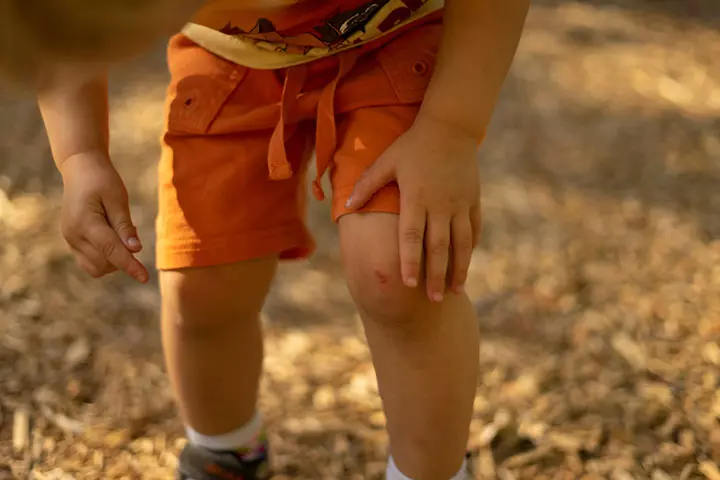
- Torn meniscus: The meniscus is a C-shaped piece of rubbery cartilage between the tibia and the thigh bone. When children are subjected to rigorous physical activities, or trauma it might result in a torn meniscus. The symptoms include a popping sensation in the knee, stiffness, swelling, pain while rotating the knee, and tenderness of the knee joint.

It can be managed by using crutches to restrict the joint’s movement, exercising to strengthen the muscle around the knee, and wearing special shoe inserts to distribute the weight uniformly while walking, so that there is no excessive pressure (9)
Kneecaps help your baby learn to crawl or walk. Read the next section to understand how to take care of your baby’s kneecaps.
How To Care For Your Baby’s Kneecaps?

Here are some easy ways to strengthen your baby’s kneecaps and protect them from injuries.
- Anecdotal evidence suggests that regular massage of the knees with olive oil or coconut oil might strengthen the kneecaps.
- You can also try a few stretching exercises, such as bending the knee in and out and moving the legs up and down. These also help in strengthening the knees.
- The cartilage inside the knees provides a cushiony effect while the baby tries to crawl on hard surfaces. It might look painful to us, but it is not the case for babies. However, if your baby tends to crawl on hard surfaces often, you can provide them with knee protectors to prevent bruising.
Frequently Asked Questions
1. What is the purpose of the knee cap?
The knee cap protects the knee joint and supports the quadriceps muscles while bending or straightening the leg (10).
2. How do babies walk without kneecaps?
Knee caps are not essential for walking. The soft cartilage that acts as temporary kneecaps may help babies walk until they develop permanent kneecaps (11).
3. Is it possible for babies not to have kneecaps?
Babies are born with kneecaps made of cartilage; however, babies born with a condition called small patella syndrome will either have no kneecaps (aplastic) or very small kneecaps (hypoplastic patella) (12).
4. Can babies dislocate their knees?
Yes. Infants can dislocate their knees; however, the occurrence of babies being born with unstable kneecaps (congenital dislocation) is rare (7).
5. How can I support my baby’s knee health?
If your baby is crawling, give them plenty of tummy time and provide nutritious food to support bone health and maintain a healthy weight. When they start walking, use soft, flexible shoes and provide safe toys and environments. Gentle circular knee massages can help relieve strain and promote strong knees.
If you are wondering whether babies have kneecaps, the answer is yes. Kneecaps are made of cartilage that turns into bone between ages two and six. However, ossification is a slow process and may take several years to complete. You can protect and strengthen your baby’s kneecaps by massaging their knee regularly with olive oil or coconut oil. You can also try different stretching exercises to strengthen your baby’s knees. In addition, include plenty of calcium and nutrient-rich food in your baby’s diet to help develop healthy and strong bones.
Infographic: Complications That May Occur During Baby Kneecap Development
Structural deformities or injuries may hamper the proper development of kneecaps in babies. This may lead to pain and long-term discomfort in the child. The infographic below lists some complications that may affect the knee and the kneecap.
Some thing wrong with infographic shortcode. please verify shortcode syntaxIllustration: Do Babies Have Kneecaps And When Do They Form?
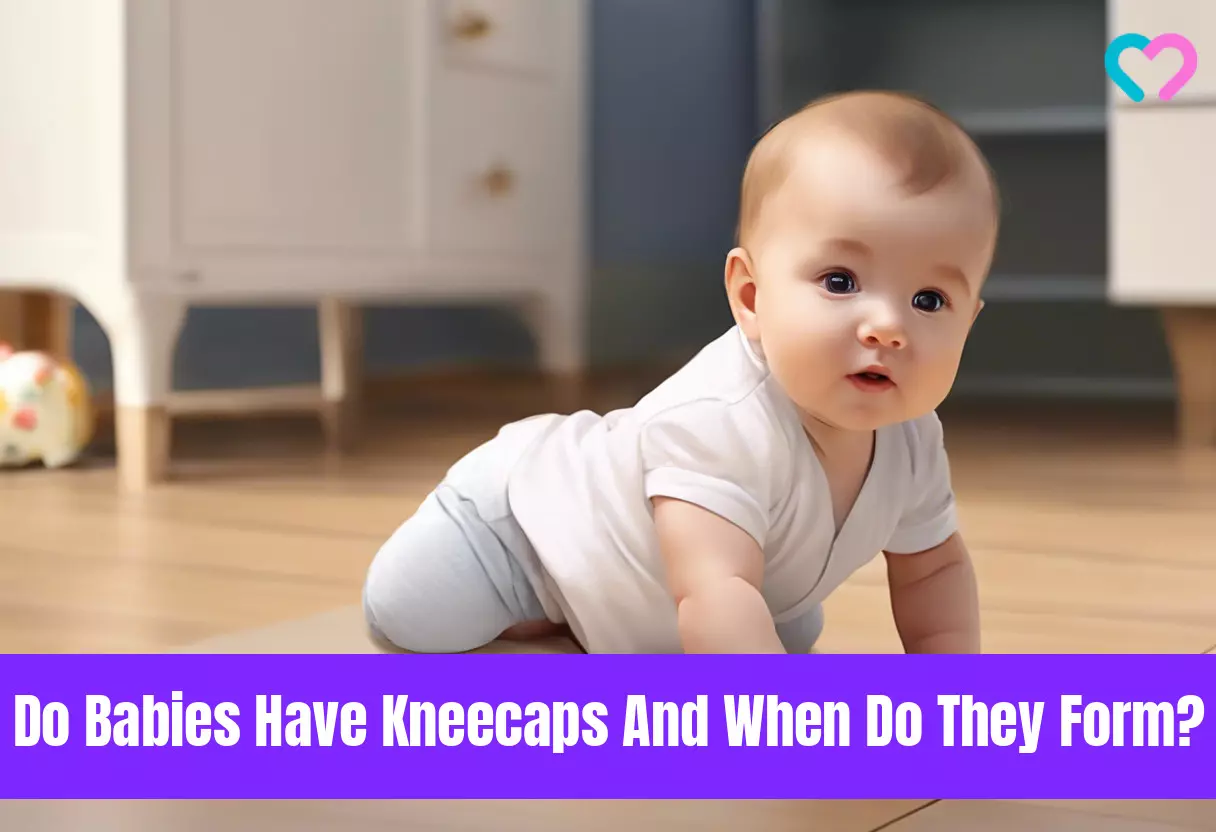
Image: Stable Diffusion/MomJunction Design Team
Have you ever wondered if babies have kneecaps? Find out in this informative video! Learn about the development of baby’s bones and how kneecaps form.
References
1. Edward Gotlieb; Is it true that babies are born without knee caps? If so, why?; MadSci Network
2. What Makes Children’s Bones Different From Adult Bones? Childen’s Healthcare Of Atlanta
3. Dr. Eric W. Edmonds; Bones Develop in Distinctive Ways Depending on Gender; Rady Children’s Hospital-San Diego
4. Breeland G et al., Embryology, Bone Ossification;NCBI
5. Cox CF et al; Anatomy, Bony Pelvis and Lower Limb, Knee Patella;NCBI
6. Chandra M. Jennings and Lindsay Tjiattas-Saleski; Bipartite Patella; The Journal of the American Osteopathic Association (2016).
7. Akifusa Wada, et al.; Congenital dislocation of the patella; NCBI
8. Osgood-Schlatter Disease (Knee Pain); American Academy of Orthopedic Surgeons
9. Torn Meniscus; Boston Children’s Hospital
10. The Kneecap (Patella) and Knee Joint; Saint Luke’s
11. Fractured Kneecap; Cedars Sinai
12. Coxopodopatellar syndrome; Genetic and Rare Diseases Information Center
13. Your Bones; The Nemours Foundation
Community Experiences
Join the conversation and become a part of our nurturing community! Share your stories, experiences, and insights to connect with fellow parents.
Read full bio of Dr. Mubina Agboatwalla
Read full bio of Rohit Garoo
Read full bio of Dr. Ritika Shah
Read full bio of Vidya Tadapatri





